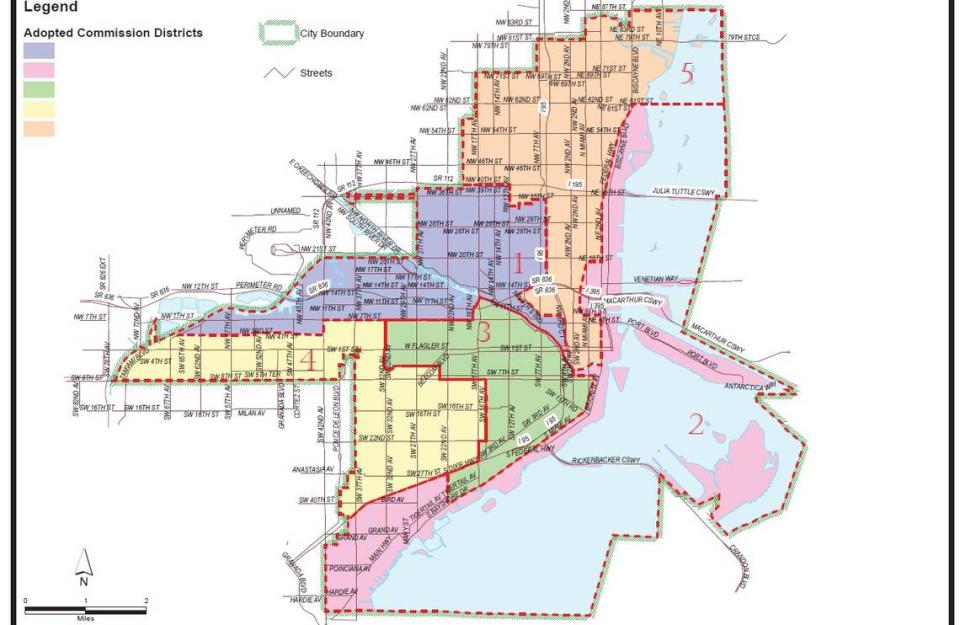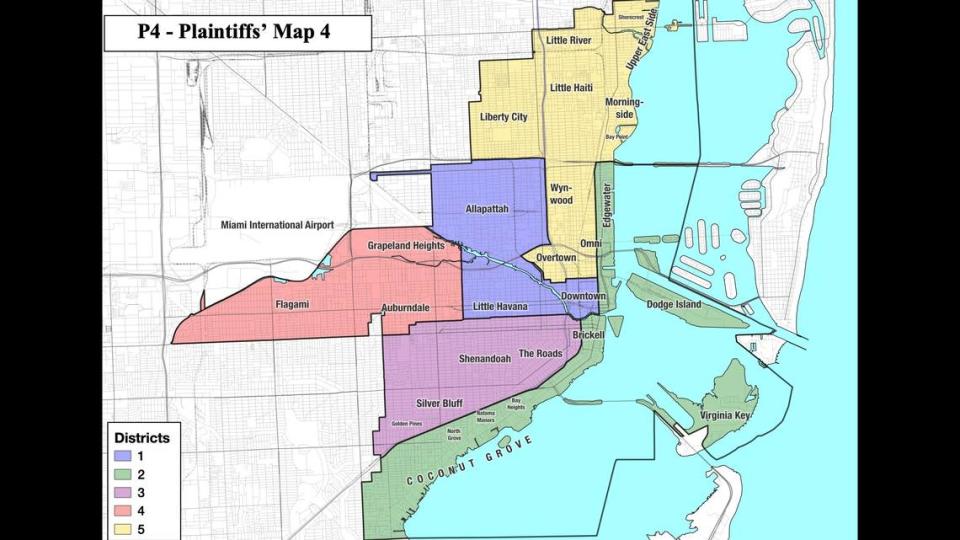Legal fight over Miami’s city voting map has reached U.S. Supreme Court. Now what?
- Oops!Something went wrong.Please try again later.
The fight over which voting map should be used for this year’s city of Miami elections has officially reached the U.S. Supreme Court, and a recent filing suggests the case is getting a serious review.
Community groups suing the city over allegations of racial gerrymandering have asked the highest court in the land to resolve an urgent issue: Which map should the city use to hold elections in districts 1, 2 and 4 on Nov. 7? The community groups asked for an emergency review from U.S. Supreme Court Justice Clarence Thomas, who is assigned to deal with appeals of decisions made by the U.S. Court of Appeals for the 11th Circuit.
The plaintiffs have a preferred map that was favored by a federal trial judge, but a three-judge appellate panel sided with the city on Aug. 4.
On Thursday, Thomas asked the city of Miami to explain its side, a signal to the community groups that the case is not being summarily dismissed. Thomas has given the city until 5 p.m. Monday to file its response.
“The sign that they’re interested in it is that they’re asking for a response,” said Carrie McNamara, a staff attorney with the American Civil Liberties Union of Florida and one of the attorneys representing the community groups.
The clock is ticking — Miami-Dade County elections officials need to assign voters to the correct precincts before mailing out voter information. Department officials say they are ready to work with whichever map the Supreme Court chooses. City rules required candidates to qualify between Sept. 8 and Sept. 23. Vote-by-mail ballots are expected to be sent out in October.
Election litigation typically moves quickly at the Supreme Court, according to an explanation by news and analysis website SCOTUSblog. Thomas can grant or deny the plaintiffs’ request on his own, or he can refer it to the full court for a vote. If that happens, the decision would likely be brief, and a vote tally may not be made public.
“The justices generally do not explain their decision, and they often do not explicitly indicate how each justice voted,” reads the SCOTUSblog article.
The Supreme Court would not be issuing a final ruling on the overall lawsuit, which is still pending in federal court and expected to go to trial in early 2024. The Supreme Court’s decision, which could come in the next week, would set a temporary map to be used in the November elections.



